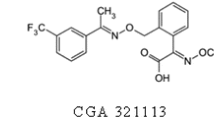Abstract
Mango, the major fruit crop of India is affected by stone weevil, which can cause serious damage to the fruits. Acephate gives good control of mango stone weevil. Residues of acephate and its major metabolite, methamidophos were evaluated on mango fruits following repeated spray applications at the recommended dose (0.75 kg a.i. ha−1) and double the recommended dose (1.5 kg a.i. ha−1). Acephate residues mostly remained on the fruit peel which persisted up to 30 days. Movement of residues to the fruit pulp was detected after 1 day of application, increased to maximum of 0.14 and 0.26 mg kg−1 after 3 days and reached to below detectable level (BDL) after 20 days. Methamidophos, a metabolite of acephate, was detected from 3rd day onwards in both peel and pulp and persisted up to 15 days. The residues (acephate + methamidophos) dissipated with the half-life of 5 days in peel and pulp. A safe pre-harvest interval of 30 days is recommended for consumption of mango fruits following treatment of acephate at the recommended dose of 0.75 kg a.i. ha−1.
Similar content being viewed by others
References
Anonymous (1976) acephate: pesticide residues in food. www.inchem.org/documents/jmpr/jmpmono/v076pr02.htm. Accessed 1 May 2010
Asensio JS, Prado APM, Medina MP, Soria MTM, Clavijo MP (1999) Behaviour of acephate and its metabolite methamidophos in apple samples. Chromatographia 49:155–160
Fen Z, Li J (2003) Progressing on toxicity and residual analysis of methamidophos. J Traditional Chinese Vet Med 21:40–42
Hoskins WM (1961) Mathematical treatment of loss of pesticide residues. Plant Prot Bull (FAO) 9:163–168
NABARD (2003) National Bank of Agriculture and Rural Development. www.nabard.org. Accessed 3 Apr 2010
Tomlin C (1995) The pesticide manual, 10th edn. The Royal Society of Chemistry, Cambridge, p 1341
Verghese A (1998) Fallen fruit sampling helps timing of first spray for control of mango stone weevil, Sternochetus mangiferae Fab. (Coleoptera : Curculionidae). Insect Environ 3:91–92
Verghese A, Nagaraju DK, Vasudev V, Kamala Jayanthi PD, Madhura HS, Stonehouse JM (2005) Effectiveness of insecticides of synthetic, plant and animal origin against the mango stone weevil, Sternochetus mangiferae Fab (Coleoptera : Curculionidae). Crop Prot 24:633–636
Acknowledgments
The authors thank Director, IIHR Bangalore for providing the facilities for carrying out this study.
Author information
Authors and Affiliations
Corresponding author
Rights and permissions
About this article
Cite this article
Mohapatra, S., Ahuja, A.K., Deepa, M. et al. Residues of Acephate and its Metabolite Methamidophos in/on Mango Fruit (Mangifera indica L.). Bull Environ Contam Toxicol 86, 101–104 (2011). https://doi.org/10.1007/s00128-010-0154-2
Received:
Accepted:
Published:
Issue Date:
DOI: https://doi.org/10.1007/s00128-010-0154-2




